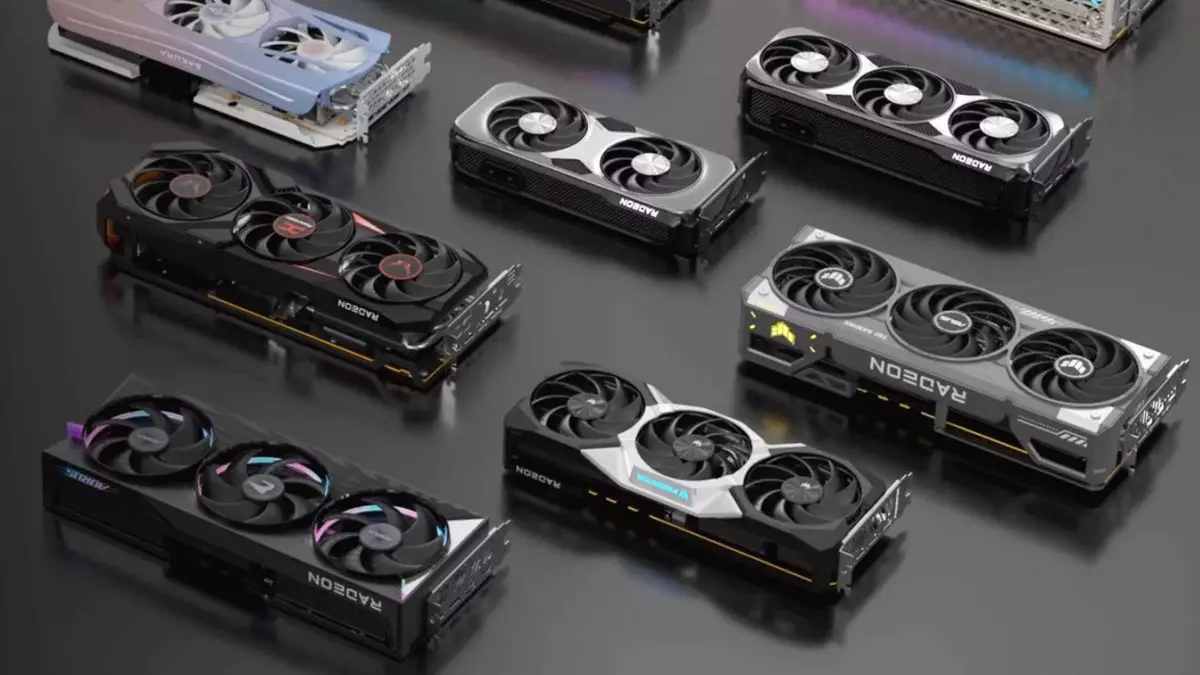In the competitive landscape of graphics processing units (GPUs), timing is critical, and the recent developments regarding AMD’s much-anticipated Radeon RX 9070 and RX 9070 XT graphics cards have sparked both curiosity and concern among gamers and tech enthusiasts alike. Initially projected for unveiling at CES 2025, AMD has opted for a more measured approach, leading to broader implications in the market. This article delves into the motivations behind AMD’s decision to delay the launch of these cards and examines their potential impact on the GPU market.
Revealing the Reasons Behind the Delay
AMD’s postponement of the RX 9070 series has generated speculation on various fronts. David McAfee, Vice President and General Manager at AMD, has made it clear that the company is taking additional time to enhance its software stack. In an industry where performance optimization can mean the difference between success and failure, AMD’s focus on achieving “maximum performance” before launch is both reassuring and indicative of the challenges ahead.
Moreover, the delay appears to be partly influenced by Intel’s recent announcement regarding the RTX 50-series GPUs. AMD has openly acknowledged that competition from Nvidia, particularly the surprisingly low price tags associated with the RTX 5070 and RTX 5070 Ti, has played a role in its decision to hold back. Frank Azor from AMD confirmed this relationship, stating that the announcement by Nvidia “went into our decision” to scale back the release schedule for their new products.
The intricate balancing act between product performance and market readiness has deep implications for AMD. It’s not simply a matter of producing a high-quality GPU; it also represents a strategic positioning against Nvidia’s robust offerings. The concern for AMD stems not only from the performance of their cards but also from pricing strategy that aligns with market expectations generated by Nvidia’s pricing scheme.
While optimizing software and improving performance is admirable, this tactic can complicate relations with board partners who may have anticipated a different timeline for product rollouts. Specifically, partners may have already committed significant resources to the higher price points initially projected for the AMD GPUs. This situation could lead to financial disputes and inventory issues, hampering the launch even further.
As the gaming community eagerly awaits further revelations, the importance of the value proposition for the RX 9070 and RX 9070 XT cannot be overstated. With the launch date now set for March, AMD’s challenge will be to convincingly advertise the advantages of its new GPUs in a market that will be fresh with rising competition from Nvidia. The promise of more FSR 4 titles is an encouraging sign, as this could substantially enhance the gaming experience and entice potential consumers to opt for AMD’s offerings over Nvidia’s.
The delay also raises questions around confidence in the product itself. Historically, launches marred by uncertainty can result in negative perceptions that may be difficult to shake off, especially if competing products receive favorable reviews. While AMD works to improve its offerings, the market will certainly have its eye on early testing and user feedback.
While AMD’s delay in launching the RX 9070 series may initially signal uncertainty or hesitation, it may very well be a strategic decision to ensure product excellence in a highly competitive market. As developments unfold and the March release date approaches, gamers and industry analysts will closely monitor how the Radeon RX 9070 and RX 9070 XT are positioned against Nvidia’s RTX 50-series. The challenges at hand for AMD are evident, but so are the opportunities to solidify their brand presence. For now, one can only hope that the extended wait leads to GPUs that not only meet but exceed expectations in performance and value.


Leave a Reply